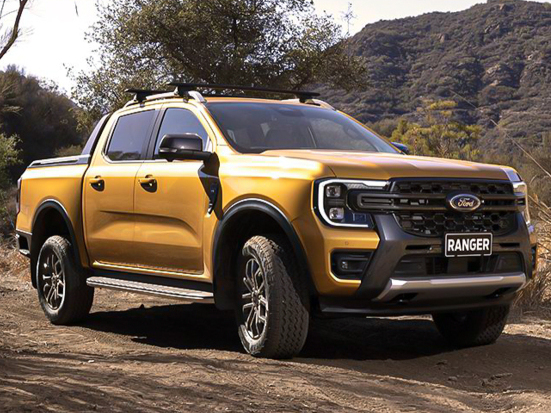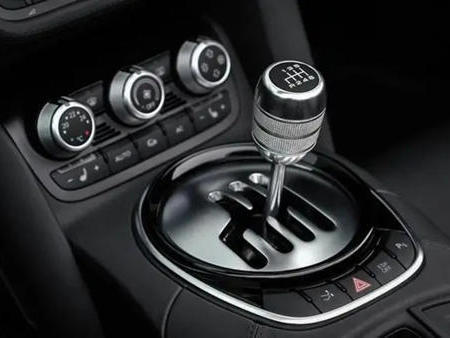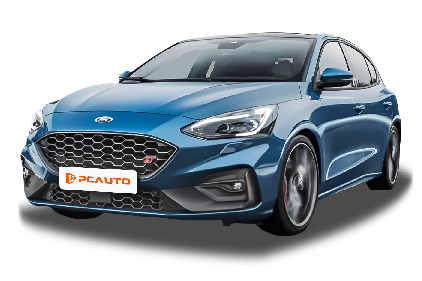Q
How much horsepower can a Focus ST handle?
The horsepower that the Focus ST can withstand varies depending on the model version. For example, the 2014 Focus ST 2.0 Ecoboost has a maximum engine horsepower of 253 PS. The new Focus ST Edition special edition is equipped with an EcoBoost 2.3-liter inline 4-cylinder turbocharged gasoline engine, with a maximum output of 280 hp. Different engine tunings and technical applications result in varying horsepower performance across models. Higher horsepower delivers stronger power output, providing advantages in acceleration and overtaking. For instance, the 280-horsepower version accelerates from 0 to 100 km/h in just 5.7 seconds, with a top speed of 250 km/h, offering a more thrilling driving experience. However, during actual driving, it's essential to properly utilize the vehicle's horsepower by considering overall performance and road conditions to ensure safe operation.
Special Disclaimer: This content is published by users and does not represent the views or position of PCauto.
Related Q&A
Q
How many gears does a Focus ST have?
The Ford Focus ST sold in the Malaysian market comes equipped with a 2.3L EcoBoost turbocharged engine paired with a 7-speed automatic transmission with SelectShift, as opposed to a traditional dual-clutch or manual gearbox (a 6-speed manual option is available in some markets). This transmission offers flexible shifting control, allowing for manual mode engagement via steering wheel paddles, optimizing both power delivery and fuel efficiency (official figures are around 7.6L/100km).
Additionally, its performance-oriented tuning maximizes the engine's 280PS power and 420Nm torque, making it particularly well-suited for Malaysia’s winding roads and highways. It's worth noting that Ford has not introduced the latest Focus ST manual version in Malaysia, so consumers seeking pure driving enjoyment may need to consider parallel imports. Moreover, this transmission features Adaptive Shift Scheduling technology, which automatically adjusts shift logic based on driving style.
Q
Which model of Ford Focus is the most fuel-efficient ?
In terms of fuel efficiency, the three-cylinder Focus is relatively economical. It features advanced fuel injection technology and a lightweight design that enables precise control of fuel injection, promoting more complete combustion. The small displacement engine strikes a good balance between power demand and fuel consumption in urban driving conditions, and it can automatically adjust its operating mode. Additionally, the lighter body reduces the energy consumption required for the engine to drive the vehicle, with a combined fuel consumption typically ranging from 5.5L to 7.0L per 100km.
On the other hand, the 2014 Ford Focus ST 2.0 Ecoboost excels in power output efficiency. With a 2.0-liter engine that produces a maximum of 253PS, it can accelerate from 0 to 100km/h in just 6.5 seconds, showcasing outstanding performance in power delivery. However, its official combined fuel consumption stands at 7.2L/100km. Therefore, those prioritizing fuel economy might consider the three-cylinder Focus, while the ST version is more suitable for those seeking power efficiency.
Q
Does the Ford Focus ST feature AWD?
The Ford Focus ST is not AWD (All-Wheel Drive). It comes with Front Wheel Drive (FWD). This means that the power from the engine is sent directly to the front wheels. FWD is a common drivetrain layout, often chosen for its simplicity, cost-effectiveness, and decent traction in many driving conditions. The 2014 Ford Focus ST 2.0 Ecoboost with its front-wheel drive setup can provide good handling and performance on regular roads. It's important to note that while AWD can offer enhanced traction in challenging terrains like snow, mud, or on uneven surfaces, the FWD in the Focus ST is designed to optimize performance and fuel efficiency in locally normal driving scenarios.
Q
Does the Focus ST have a belt or chain?
The 2014 Ford Focus ST 2.0 Ecoboost uses a timing chain instead of a belt. Both timing chains and belts are used to drive the engine's valve train, ensuring that the intake and exhaust valves open and close at the appropriate times to allow the engine to inhale and exhale properly. However, there are differences between the two. Timing chains are more durable. Their service life usually depends on the vehicle maintenance conditions. Under normal circumstances, their lifespan can reach 100,000 kilometers or more, and they generally don't require regular replacement. On the other hand, timing belts have a relatively shorter lifespan. Typically, they need to be replaced after driving approximately 60,000 kilometers. Otherwise, it may cause the engine to malfunction. Thus, the Focus ST offers relatively straightforward maintenance for its timing system, allowing owners to avoid concerns about replacing timing belts after a certain mileage.
Q
What is the fuel efficiency of Ford Focus ST ?
2014 Ford Focus ST 2.0 EcoBoost has an official combined fuel consumption of 7.2L per 100km. Whether it's fuel-efficient depends on various factors and which model you compare it to. For a performance-oriented vehicle with 253 horsepower, this figure is relatively decent. It indicates that under normal driving conditions, it can maintain a certain level of fuel efficiency while still delivering strong acceleration capabilities.
However, if compared to some small, fuel-efficient city cars, the consumption might appear higher. Additionally, actual fuel consumption can vary significantly based on driving habits, road conditions, and vehicle load. Aggressive driving with frequent hard acceleration and braking will likely increase fuel consumption, while a more conservative and steady driving style may result in figures closer to the official data. Overall, it strikes a balance between performance and reasonable fuel consumption.
Q
How long can the engine of the Ford Focus ST last?
With proper maintenance and normal usage, the engine of the Ford Focus ST is typically expected to last over 600,000 kilometers, potentially exceeding 20 years. Ford has tested its next-generation ECOBOOST engine, which showed almost no significant signs of aging after 400,000 kilometers of operation, demonstrating impressive durability. However, the actual lifespan of the engine can be influenced by various factors.
In terms of driving habits, aggressive acceleration, hard braking, and prolonged high-load operations can increase engine wear and shorten its lifespan. Regarding component quality, using subpar engine oil, air filters, and other parts can hinder the engine's performance and longevity. Additionally, maintenance practices play a crucial role; irregular servicing and failing to timely replace oil and wear-and-tear parts can negatively impact the engine's long-term stability and operation.
Q
How big is a gas tank in Focus ST ?
The 2014 Ford Focus ST 2.0 EcoBoost features a fuel tank capacity of 55 liters. This substantial fuel storage capacity is beneficial as it allows the vehicle to achieve a notable range between fill-ups, catering to various driving needs, whether for daily commutes or long road trips. A larger fuel tank like this means fewer trips to the gas station during travels, providing added convenience for drivers. It gives you more flexibility on the road without the constant worry of running out of fuel too soon. This tank capacity is comparable to many other vehicles in its class, ensuring that the Focus ST can cover a considerable distance before needing to refuel.
Q
How reliable is Focus ST?
The Focus ST boasts a commendable level of reliability. In terms of chassis and suspension, it features dual-adjustable dampers, a double-tube stainless steel shock absorber casing, and powder-coated springs. The meticulously tuned chassis offers excellent stability, while the suspension system lowers the vehicle’s body height and can be adjusted to reduce unsprung weight, enhancing driving stability.
On the powertrain front, the equipped turbocharged 2.3-liter EcoBoost engine delivers consistent output with impressive torque characteristics. The 6-speed manual transmission offers quick and responsive shifts, providing an engaging driving experience. Inside, the cabin is well-appointed and reliable, featuring seats made from a blend of black leather and Alcantara materials, while the B&O sound system delivers an exceptional audio experience.
In terms of design, the RS-style classic Racing Blue paint job paired with high-gloss black accents creates an attractive yet durable exterior. Whether for daily commuting or more spirited driving, the Focus ST demonstrates high reliability through these outstanding attributes, giving owners worry-free driving experience.
Q
Does a Focus ST have a launch control system?
The 2014 Ford Focus ST 2.0 EcoBoost does not explicitly list a launch control system among its features. However, some other Ford Focus models have demonstrated support for a "launch assist" function in various tests. For instance, certain evaluations of the Focus revealed that the car could achieve a controlled launch. Yet, for this specific 2014 Focus ST, we cannot determine whether it is equipped with a traditional launch control system without official confirmation.
Launch control can optimize and stabilize acceleration from a standstill by precisely managing engine power, torque, and transmission engagement. While the Focus ST comes with a robust 2.0-liter engine that produces 253 horsepower and can accelerate from 0 to 100 km/h in 6.5 seconds, it likely lacks the specialized launch control feature found in some high-performance vehicles.
Q
Does Focus ST have a sport mode?
The Focus ST features a Sport mode, typically indicated by an "S" on the gear lever, designed to provide a more dynamic driving experience. In this mode, the vehicle's performance parameters are adjusted, resulting in more responsive engine performance. The engine responds more eagerly, and it may hold gears longer, keeping the engine in a powerband that allows for quicker acceleration. This translates to sharper throttle response, making driving more exhilarating when you need extra power for overtaking or navigating winding roads.
The transmission also plays a significant role. In Sport mode, shifting becomes more aggressive, enabling faster and more decisive gear changes. However, it’s important to note that the increased engine activity in Sport mode typically leads to higher fuel consumption compared to normal driving modes. So, while it's great to enjoy the sporty feel when the situation calls for it, be aware that it may impact your fuel costs.
Popular Cars
Model Year
Car Compare
Car Photo
Latest Q&A
Q
How reliable is a 2019 Porsche Macan?
The 2019 Porsche Macan delivers solid reliability, thanks to its proven 2.0T or 3.0T engines that offer consistent power delivery. The PDK dual-clutch transmission is another strong point—it’s both durable and buttery-smooth.
Porsche’s sporty DNA shines through in the Macan’s chassis tuning and all-wheel-drive system, yet it doesn’t compromise everyday comfort. Owner feedback suggests that sticking to the factory maintenance schedule keeps most examples running trouble-free, though be prepared for higher upkeep costs (as with any luxury vehicle).
Its strong resale value speaks volumes about its reputation for dependability. If you’re after driving thrills without sacrificing SUV practicality, the 2019 Macan is a compelling pick. Just be sure to get a pre-purchase inspection and verify full service history—it’ll pay off in the long run.
Q
How much is a 2019 Porsche worth?
The value of a 2019 Porsche depends on the model, mileage, condition, and specs. Take the popular Cayenne, for example—used ones typically go for between RM300k to RM500k. A 911 Carrera might range from RM500k to RM800k, while an entry-level 718 Boxster or Cayman could be around RM250k to RM400k. For luxury sedans like the Panamera, expect prices between RM350k to RM600k, but always check the actual condition and option list.
Porsches hold their value well, especially limited editions or high-performance GT models, but maintenance costs and service history play a big role in resale pricing. If you're buying, stick to official certified pre-owned channels or get a professional inspection. Always verify warranty transfers and repair records.
Pro tip: Compare listings on local used-car platforms and check recent sales data—market demand and inventory fluctuations affect pricing. Also, factory options (like sport packages or premium audio) can boost resale value, while accident history or multiple owners might slash the price by 10-20%.
Q
Does the 2019 Macan have a good sound system?
The 2019 Porsche Macan delivers an impressive audio performance, particularly with the optional Bose® Surround Sound System or the top-tier Burmester® High-End Surround Sound System—both offering an immersive listening experience.
The Bose® setup packs 14 speakers with 665 watts of total power, delivering crisp audio and punchy bass perfect for pop and electronic music. Meanwhile, the Burmester® system steps it up with 16 speakers and 1,000 watts, creating a wider soundstage and superior detail reproduction—ideal for classical or high-resolution tracks.
Both systems integrate seamlessly with Porsche’s standard Communication Management (PCM), supporting Apple CarPlay and multiple audio sources. If sound quality is a priority, be sure to specify your audio preference at purchase—the base model only comes with a standard speaker setup.
For the best performance, play lossless files via USB or high-quality Bluetooth codecs, and keep the system firmware updated for optimal operation.
Q
What is the resale value of a 2019 Macan?
The resale value of a 2019 Porsche Macan depends on factors like condition, mileage, specs, and service history. Current used prices hover between RM250k to RM350k, with higher trims commanding premium prices. As Porsche's entry SUV, the Macan holds its value better than most rivals thanks to brand prestige and sporty DNA – especially models optioned with Sport Chrono or full leather interiors fetching stronger money.
Pro tip: Get a pre-sale inspection and organize your maintenance paperwork – this really helps maximize resale. Macans move quickly in our local used market, with 3-5 year-old examples being the sweet spot when depreciation levels off. If you're upgrading, consider Porsche Approved Certified pre-owned – you'll pay a slight premium over private sales, but the extended warranty and factory refurbishment save headaches down the road.
Q
Is a 2019 Porsche Macan a good car?
The 2019 Porsche Macan is a well-rounded luxury SUV that stays true to Porsche's performance DNA while delivering everyday practicality. It comes with your choice of a peppy 2.0T or more powerful 3.0T engine, paired with Porsche's brilliant 7-speed PDK transmission that shifts like butter. The chassis strikes that sweet spot between sporty handling and comfortable cruising - perfect for both city commutes and weekend backroad blasts.
Inside, you'll find Porsche's typical top-notch craftsmanship with a standard 10.9-inch touchscreen featuring Apple CarPlay. Just don't expect limo-like rear legroom. These things hold their value surprisingly well, though maintenance will cost you more than your average SUV - but then again, you get Porsche's excellent service network.
Among its competitors, the Macan stands out for its driver engagement. If you want more grunt, step up to the Macan S or GTS. One pro tip: if you're shopping used, pay special attention to the PDK's condition and inspect the suspension components. Always better to go through Porsche's certified pre-owned program for that extended warranty peace of mind.
View MoreRelated News

Ford Focus is about to cease production in November and may return in 2027 in the form of an SUV.
WilliamSep 15, 2025

2025 Ford Ranger WildTrak launched, the most powerful diesel version in the Ranger lineup
MichaelAug 25, 2025

Is the Ford Ranger V6 about to enter Malaysia?
LienAug 13, 2025

Reviewing the Ford Ranger: The Dual Advantages of Rugged Appearance and Powerful Performance
Kevin WongApr 21, 2025

Ford Unveils “Simulated Manual Transmission” Patent to Reignite Driving Pleasure in Electric Vehicle
LienApr 2, 2025
View More


















Pros
Cons